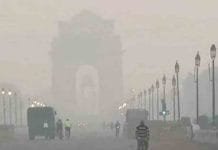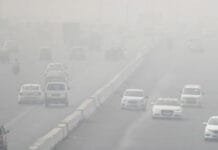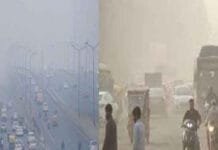The Indian Meteorological Department (IMD) has revealed that there has been no progress in the monsoon between June 12 and 18, 2024. As a result, India has experienced a significant reduction in rainfall, with a 20 percent deficit compared to the normal levels for the month of June. This has left many regions in dire conditions, struggling with both intense heat and insufficient rainfall.
IMD’s Assessment of June Rainfall
According to the IMD, between June 1 and June 18, India received only 64.5 mm of rain, which is notably lower than the average of 80.6 mm for this period. The breakdown of rainfall across different regions is even more concerning:
- Northwest India: 10.2 mm (70% below normal)
- Central India: 50.5 mm (31% below normal)
- South Peninsula: 106.6 mm (16% above normal)
- East and Northeast India: 146.7 mm (15% below normal)
The Impact on Different Regions
Northwest India
Northwest India has been hit hardest, receiving a mere 10.2 mm of rainfall, a staggering 70% below the normal levels. This drastic shortfall exacerbates the already challenging conditions of intense heat, leading to severe water scarcity and stress on agriculture.
Central India
In Central India, the situation is also grim, with rainfall 31% below normal. The region’s agricultural activities are significantly impacted, affecting the sowing and growth of crucial crops.
South Peninsula
Contrary to other regions, the South Peninsula has received 16% more rainfall than average. However, this anomaly does not compensate for the deficits in other parts of the country, leaving the overall monsoon performance below expectations.
East and Northeast India
East and Northeast India experienced a 15% reduction in rainfall. Given these areas’ dependence on monsoon rains for both agriculture and daily life, this deficit poses severe challenges.
Monsoon Progress and Future Predictions
The southwest monsoon made an initial advance into parts of the Nicobar Islands on May 19 and then covered most parts of the south and some parts of the central Bay of Bengal by May 26. Despite an early onset in Kerala and the northeastern states by May 30, the monsoon’s progress has stalled since June 12. It had covered:
- Entire states of Kerala, Karnataka, Goa, Andhra Pradesh, and Telangana
- Most parts of southern Maharashtra
- Parts of southern Chhattisgarh and southern Odisha
- Most parts of sub-Himalayan West Bengal, Sikkim, and all northeastern states
Upcoming Monsoon Coverage
The IMD forecasts that the monsoon may reach parts of Maharashtra, Chhattisgarh, Odisha, coastal Andhra Pradesh, North West Bay of Bengal, Bihar, and Jharkhand in the next three to four days. This potential advancement offers a glimmer of hope for the parched regions.
The Crucial Role of Monsoon in Agriculture
Monsoon rains are vital for India’s agricultural sector, as 52% of the total cultivable area relies on these seasonal rains. The months of June and July are particularly important for sowing kharif crops such as rice, maize, and pulses. A delayed or deficient monsoon can severely disrupt the sowing season, leading to lower crop yields and financial distress for farmers.
Replenishing Water Reservoirs
Besides agriculture, the monsoon is crucial for replenishing India’s reservoirs, which provide drinking water and support power generation. Insufficient rainfall impacts water availability for household use, irrigation, and industrial purposes, creating widespread socio-economic challenges.
Weather Department’s Predictions and Expectations
In late May, the weather department had optimistically predicted above-normal rainfall for the four-month monsoon season (June to September), estimating total rainfall to be 106% of the 87 cm average. Specific predictions included:
- Northeast India: Below normal rainfall
- Northwest India: Normal rainfall
- Central and South Peninsular regions: Above normal rainfall
Current Scenario vs. Predictions
The current scenario starkly contrasts the optimistic predictions made earlier. The 20% deficit in June’s rainfall and stalled monsoon progress highlight the unpredictability and challenges in forecasting weather patterns accurately.
The Broader Implications of Monsoon Delays
Agricultural Output and Economy
A weak or delayed monsoon directly affects agricultural output, impacting the livelihoods of millions of farmers and the overall economy. Reduced crop yields can lead to higher food prices and inflation, straining household budgets and increasing poverty levels.
Water Scarcity
Water scarcity becomes a critical issue during monsoon delays. Cities and rural areas alike face shortages, leading to water rationing and conflicts over water usage. The stress on already depleting groundwater reserves increases, exacerbating long-term sustainability concerns.
Heatwaves and Health Issues
The combination of heatwaves and insufficient rainfall leads to severe health issues, including dehydration, heat strokes, and other heat-related illnesses.
The monsoon’s stagnation amid intense heat has left many regions in a precarious situation. The significant reduction in rainfall not only impacts agriculture but also exacerbates water scarcity and health challenges. While there is hope for monsoon advancement in the coming days, the overall scenario underscores the need for better water management practices and adaptive agricultural strategies to mitigate the adverse effects of such unpredictable weather patterns.
As we navigate these challenging times, it is imperative to focus on sustainable solutions that ensure the resilience of our agricultural systems and water resources against the backdrop of climate variability.















